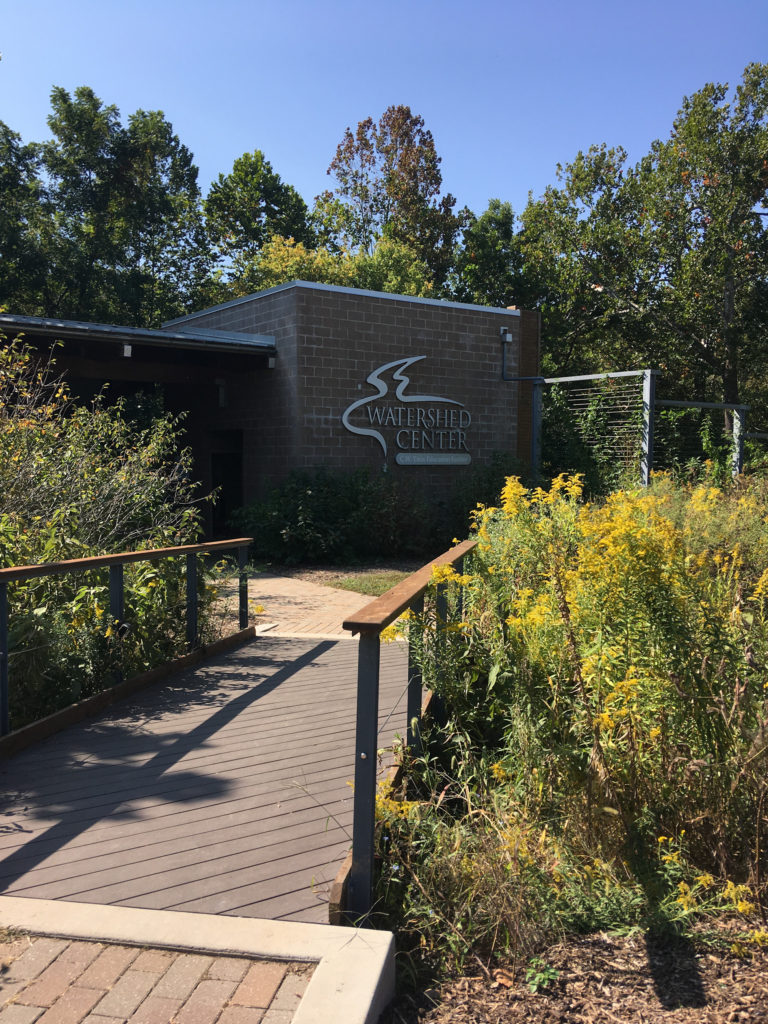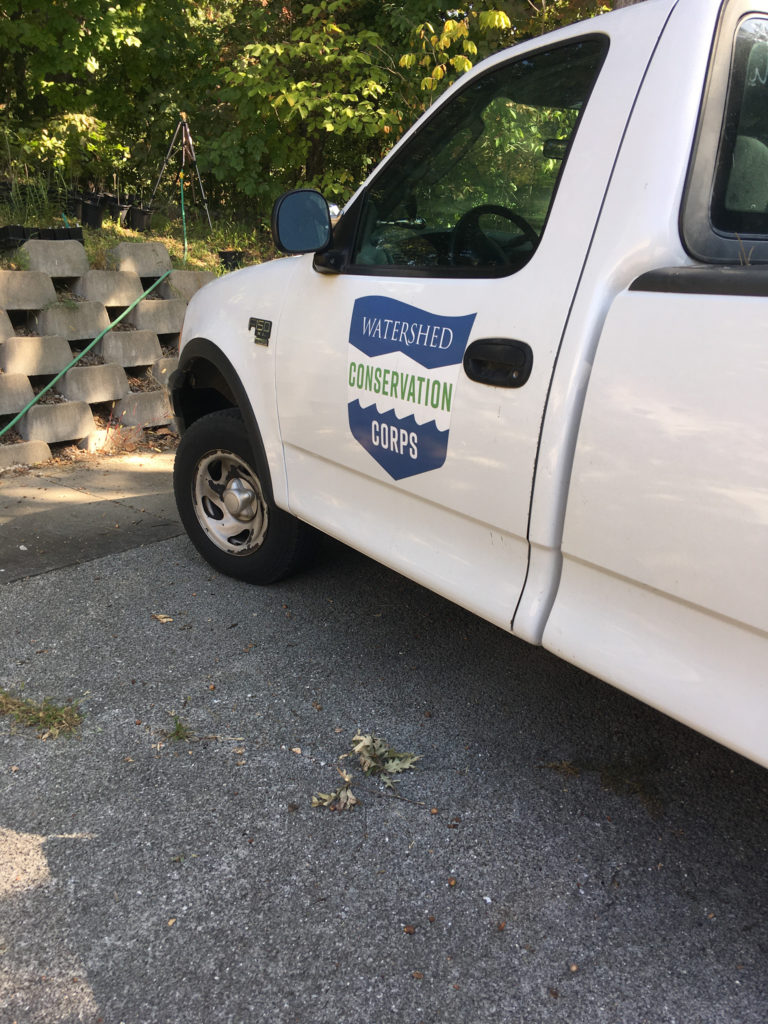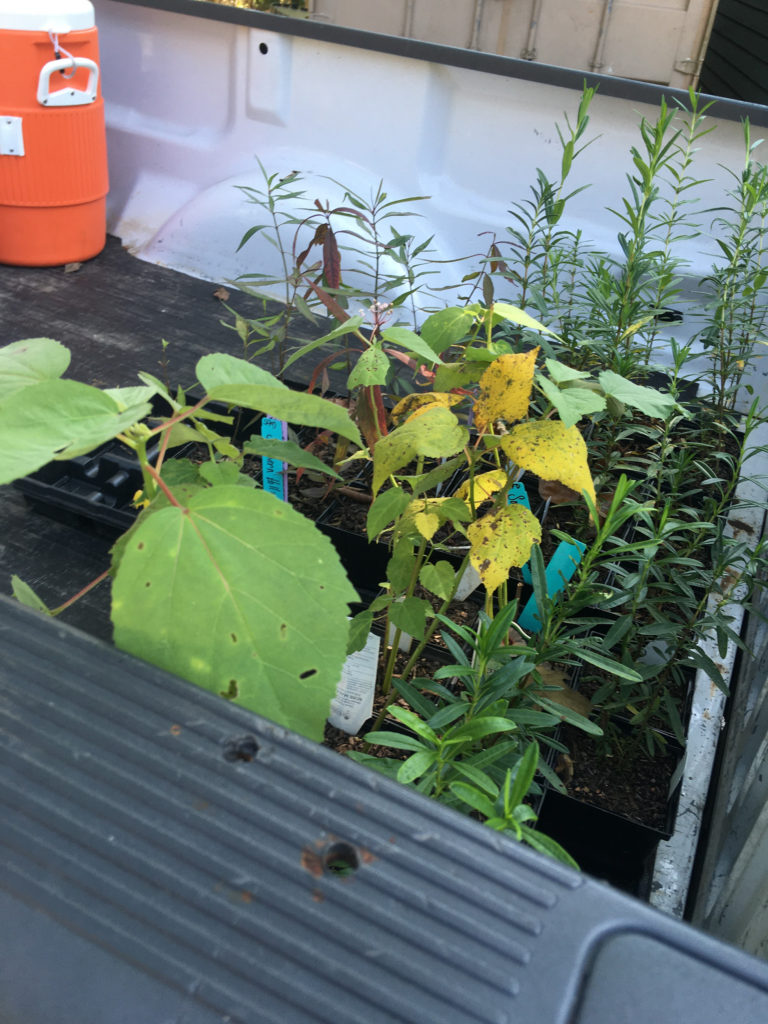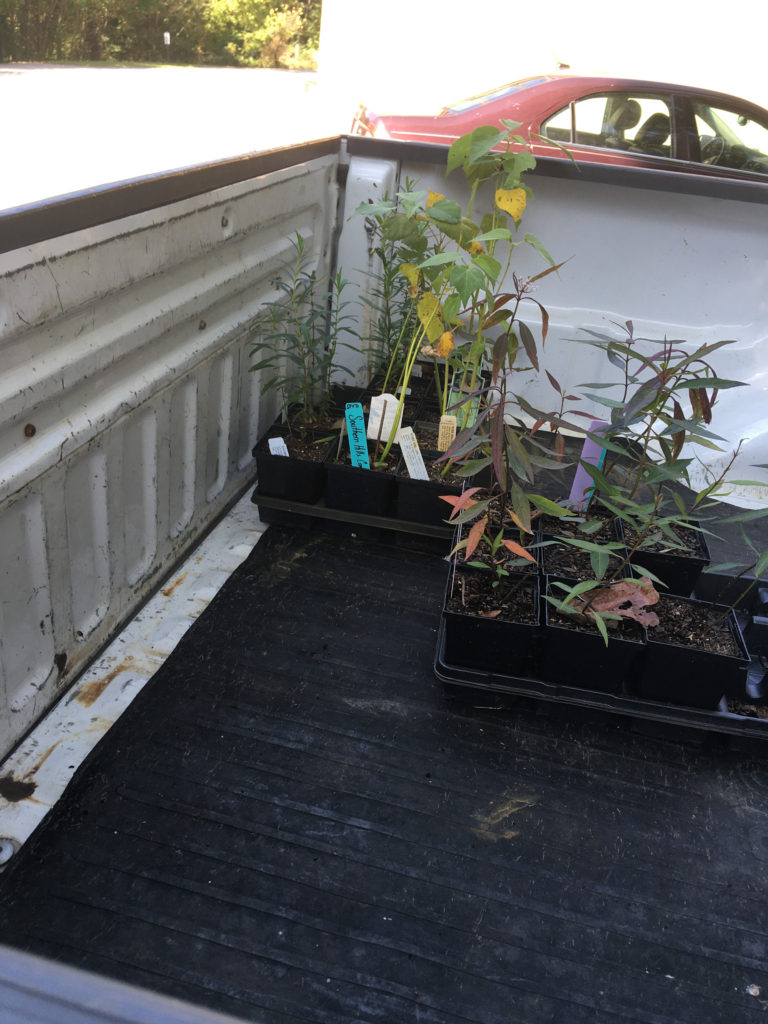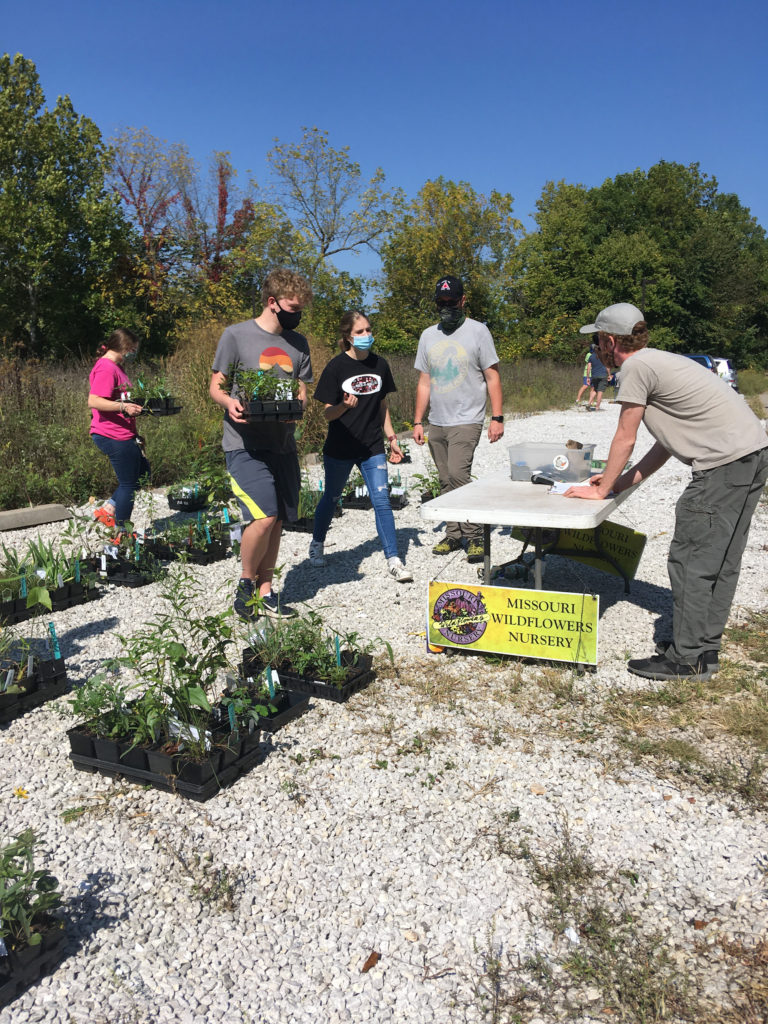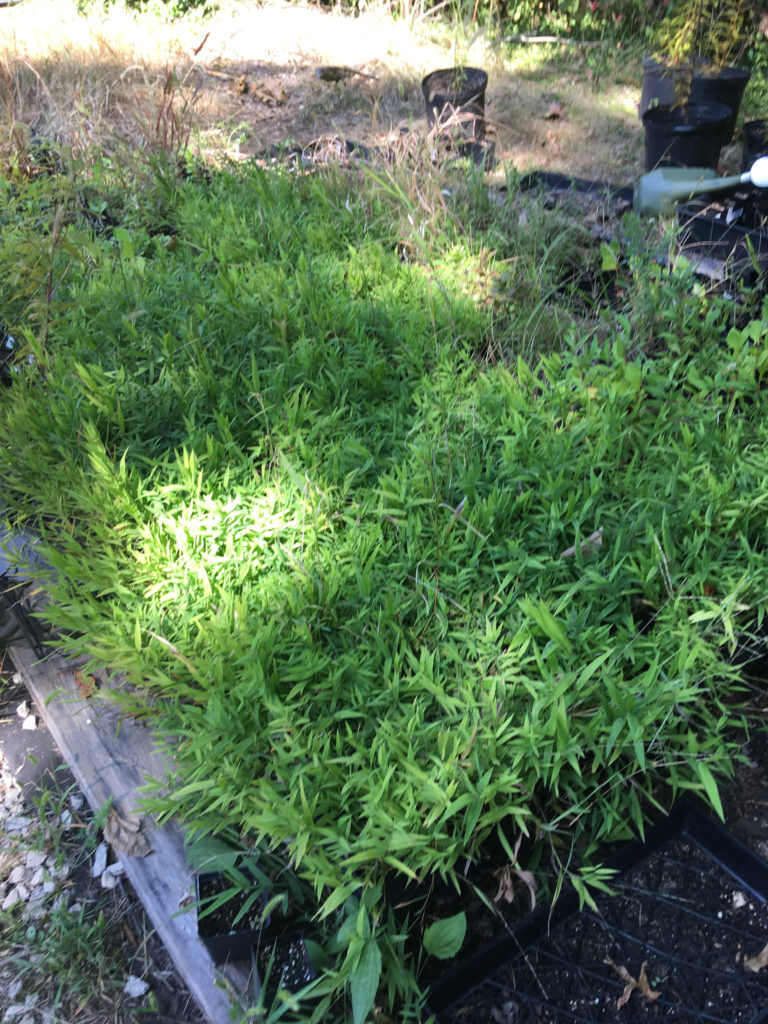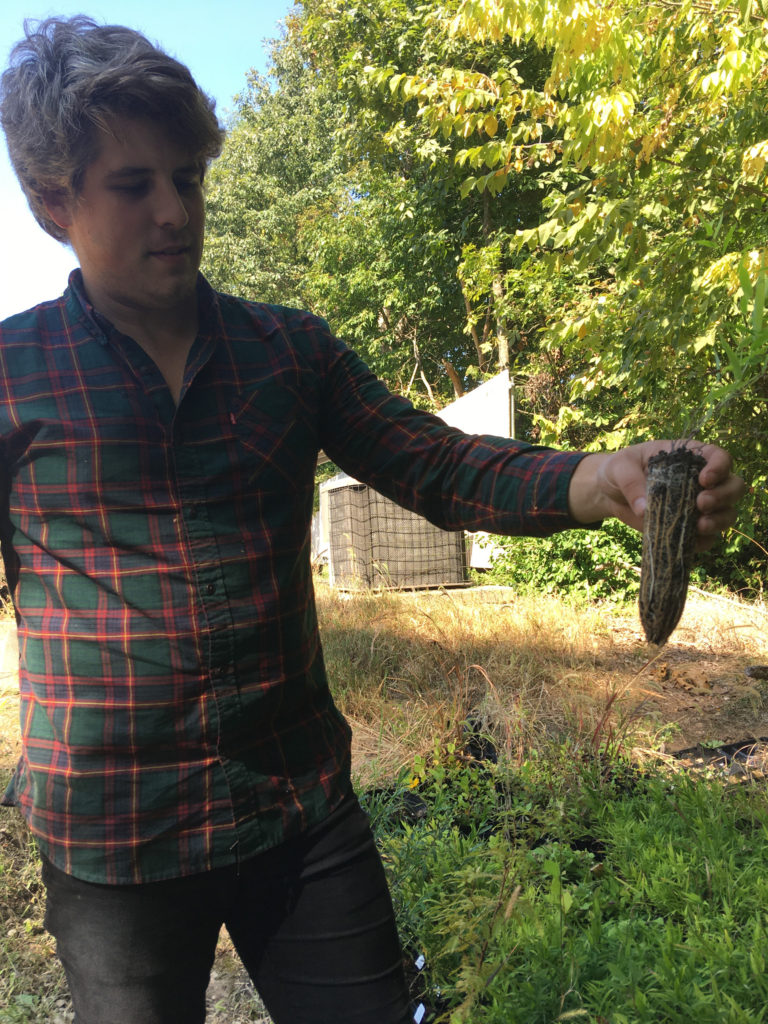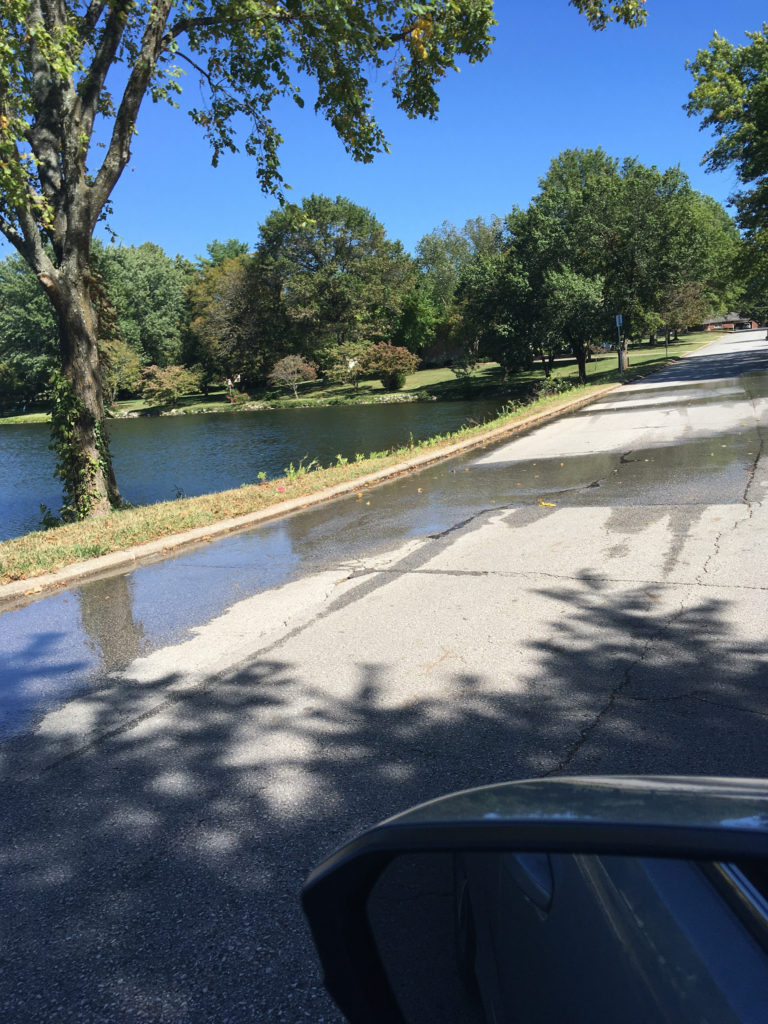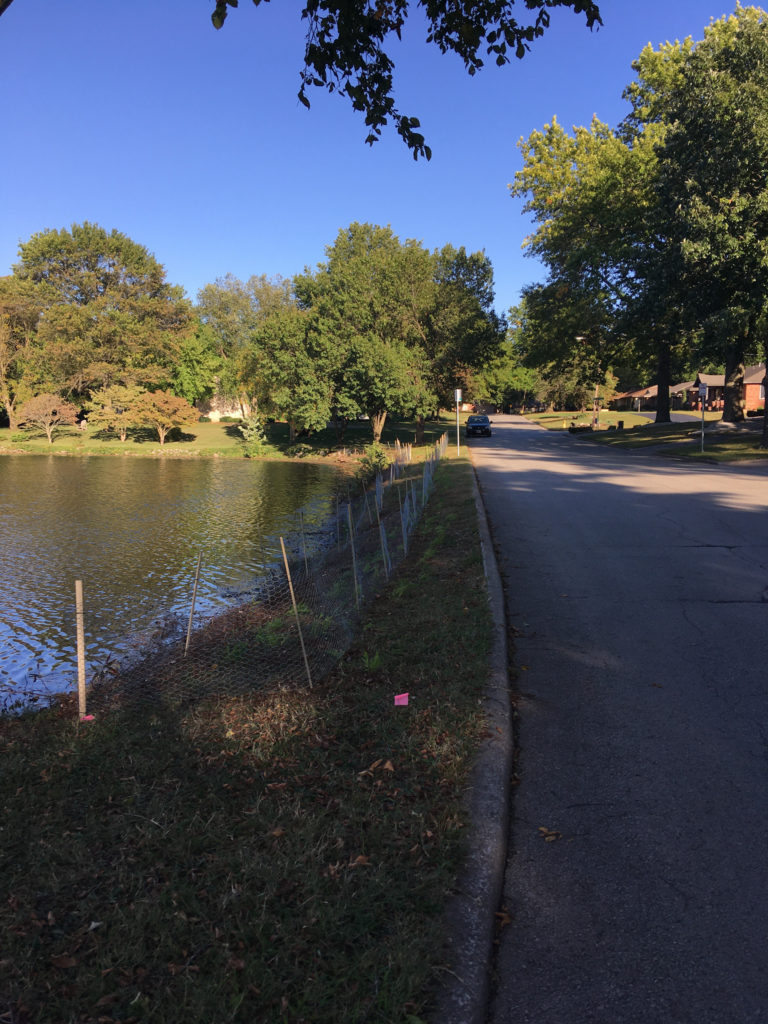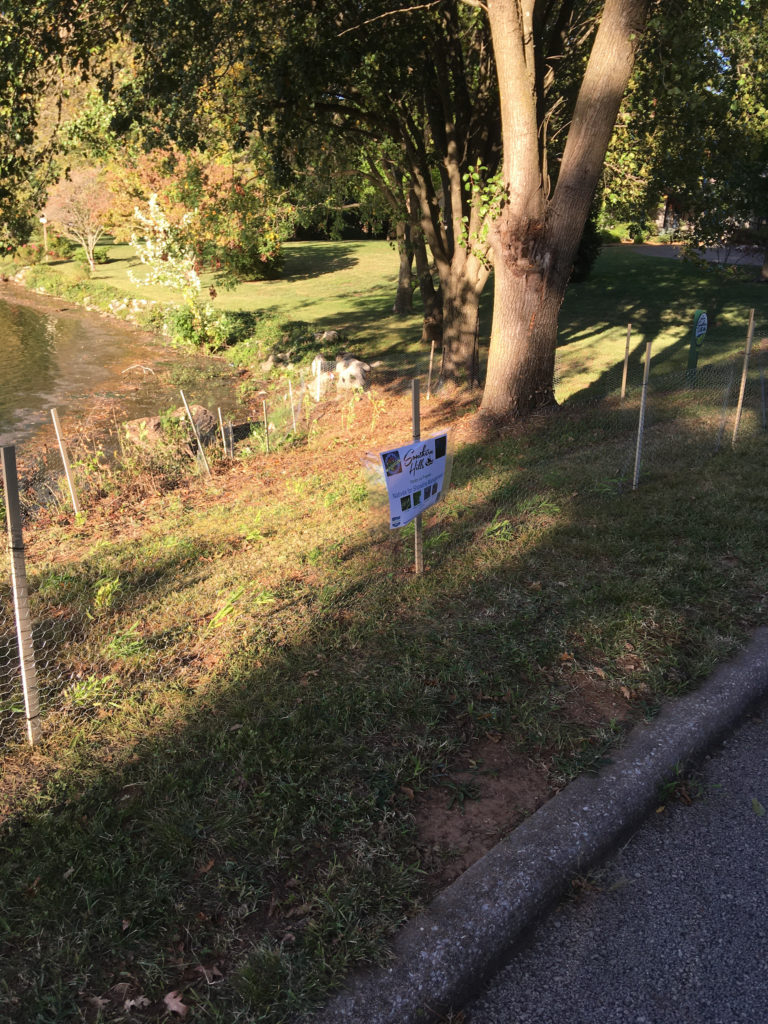Missouri Department of Conservation
Community Conservation Grant Program
NATIVES FOR SHORELINE MANAGEMENT – PHASE I
Over the years, various property owners along the Southern Hills lakes have sought to prevent shoreline erosion by implementing various armored edging methods such as riprap, natural stone, railroad ties, stacked modular block, etc. The CID Board is very thankful for the improvements and maintenance over the past 60+ years and encourage the property owners to continue shoreline management into the future.
Some of the shoreline is adjacent to public right-of-way, with no specific adjacent property owner to assist with shoreline protection. Most adjoining property owners have maintained a non-native lawn that extends to the shoreline. Based on research, and presentations at CID Board meetings by the Missouri Department of Conservation, and the City of Springfield Environmental Resources and Public Works staff, we are aware that a native natural buffer would be better than a typical lawn. The natural buffer would minimize erosion, improve water quality, and discourage geese.
Although the ducks and geese have been a pleasure over the years, their population has grown to an unsustainable level, and they have become more of a hindrance than an enjoyment. It’s understood that there are various plantings and other features that deter geese/ducks. These items restrict their line of sight as well as their ease of access, and include:
- barriers at least 2’ in height,
- surfaces that are rocky,
- thorny and/or tall plants, and
- non-mowed/non-flat area to minimize access to the lakes
The purpose of this grant is to provide revenue for a pilot project that will educate the neighborhood on Shoreline Management, and the three primary objectives are:
- Reducing shoreline erosion,
- Deterring geese/ducks, and
- Filtering pollutants
The pilot project (Phase I) will serve as a demonstration area along approximately 200 linear feet of shoreline (and right-of-way). The chosen location is highly visible by much of the neighborhood vehicular traffic (and walkers) since it is adjacent to E. Avalon Drive which continues northward as S. Cedarbrook Avenue, one of the primary collectors through the CID. Future phases will extend to the west between the middle lake shoreline and right-of-way, and eventually along the CID maintained banks of the upper and lower lakes.
The plants installed include:
- River Oats (native grass) http://www.missouribotanicalgarden.org/PlantFinder/PlantFinderDetails.aspx?kempercode=a240
- Aquatic Milkweed (native perennial) http://mowildflowers.net/Aquatic-Milkweed-Asclepias-perennis_p_46.html
- Rose Mallow (native perennial) https://grownative.org/native_plants/rose-mallow/
- Shrubby St. Johnswort (native shrub) https://nature.mdc.mo.gov/discover-nature/field-guide/shrubby-st-john’s-wort
Our Partners for this project included:
- Missouri Department of Conservation https://mdc.mo.gov/trees-plants/native-plant-restoration
- Watershed Conservation Corps https://watershedcommittee.org/watershed-conservation-corps/
- Missouri Wildflowers Nursery http://mowildflowers.net/
For more information on native plants:
- Grow Native https://grownative.org/
